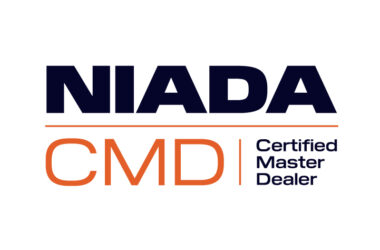Low inventory on new car lots. Cars that go directly to consumers and never hit the lot. Higher prices and the payments that go with them.
Those are all 2021 woes, right? We’ve turned a corner on the chip shortage in 2022, haven’t we?
Not necessarily.
Some of the supply chain woes continue, and while things will improve this year, those improvements won’t happen overnight.
So what is being done about the chip shortage? When will it end and what does it mean to used car dealers right now?
What’s Being Done?
One thing you might have heard is how well Tesla has navigated the chip shortage.
Its method? Using non-automotive grade components in its vehicles.
While that has certainly caused it some headaches (especially when it comes to giant touch screens) the move did enable Tesla to produce more cars last year.
But it’s important to note Tesla’s numbers are nowhere close to the volume produced by Toyota and other top manufacturers.
Relying on non-automotive grade suppliers would simply be a stopgap – not a long-term solution – for other manufacturers. So instead, many are slashing production until the supply chain can be fixed.
And how will that happen?
Well, the real issue is similar to the toilet paper shortage at the beginning of the COVID pandemic.
The problem then was not a lack of paper or trees or even bamboo that could be transformed into toilet paper. It was the shift from making more industrial paper products used in the bathroom at the office to making consumer-grade paper packaged for home use – and getting that supply to retailers.
That means the solutions for the chip shortage include:
- Making more chips of the type needed: New plants are being built and some semiconductor manufacturing that had gone overseas is returning to the United States.
- Transparent supply chain management plans: Planners need to ask more “what if” questions, knowing that the next disruption will come and it’s not a matter of if, but when.
- Diversify where chips are acquired: Many automakers become dependent on one supplier, and if that supplier is crippled, so are they.
Diversification when it comes to where chips come from and who makes them is key. Over-reliance on the chip industry in China is one of the issues in the current shortage.
There’s also talk that manufacturers need to rethink how they make cars and even where plants are located.
Things like renewable power sources independent of local power grids, shipping and receiving options, the presence of a diverse workforce and even the risk of natural disasters where plants are located are all being reexamined.
When Will the Chip Shortage End?
Answering that question requires a crystal ball. But if we look at the increases in manufacturing coupled with changes in demand and other factors, we can surmise things will steadily get better, with an end to the crisis coming toward the end of 2022 or the beginning of 2023.
Of course, that’s barring any other major market issues that might arise this year and assumes the current labor shortage will improve.
Those things appeared to be getting better at the start of the year, so we can assume good outcomes – at least for our predictions.
The key, as always, is to hope for the best and prepare for the worst. Manufacturers are working to find solutions and manage customer expectations in the meantime.
Even if the chip shortage is resolved tomorrow, at best it would take time for things to just return to “normal.”
What Does the Chip Shortage Mean for Dealers?
This, of course, is where the rubber hits the road, so to speak.
What does all this mean to dealers now?
First, new car dealers can anticipate another year beginning with empty lots. Many of them are likely to fill only slowly as the year progresses.
New cars will remain hard to get and prices will remain high.
That’s not great news for consumers, since the average car payment rose to $520 this year.
Second, used car dealers can fully expect higher demand.
There will be fewer trades as buyers will hang on to their current vehicles if they’re waiting for replacements. Used car inventory will typically be older and more expensive at the same time.
The demand for used vehicles will remain strong at least through the first three quarters of the year – and perhaps beyond.
That means a few things.
Maintaining a strong inventory is critical if it’s at all possible. Creative, low-cost financing might be a priority for many consumers. And focusing on cars in higher demand can lead to greater profits both in the short and long term.
Keep Track of the Chip Shortage and Other Issues
Want more news like this? Looking for support and answers to questions you won’t find anywhere else?
NIADA has supported the independent used auto dealer community for more than 75 years. Learn how joining NIADA can help you navigate the changing market.










